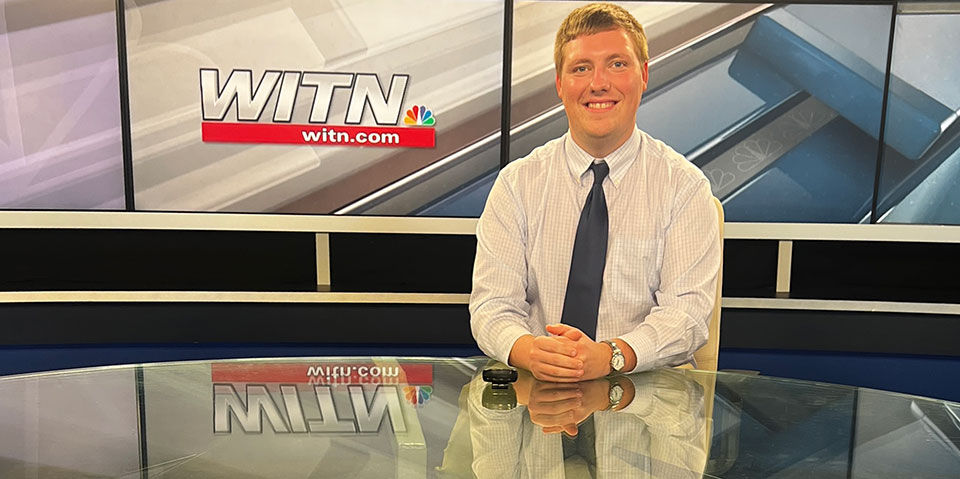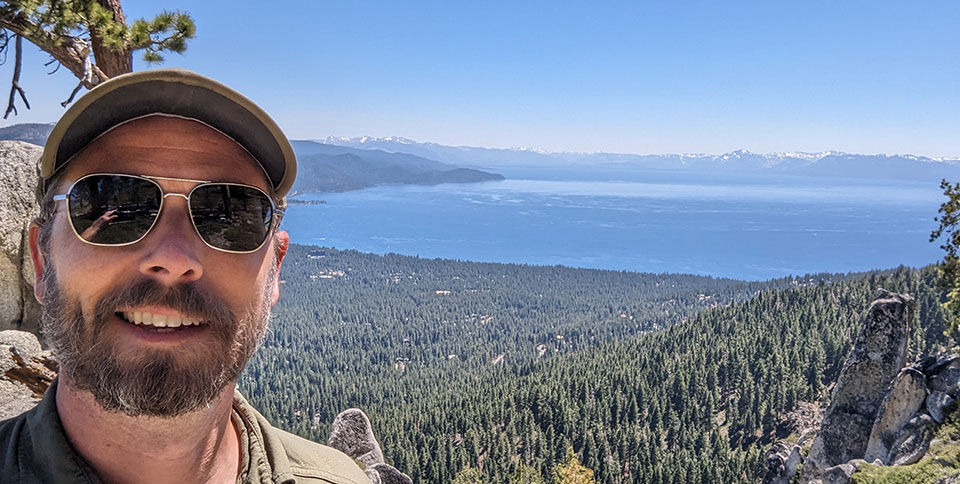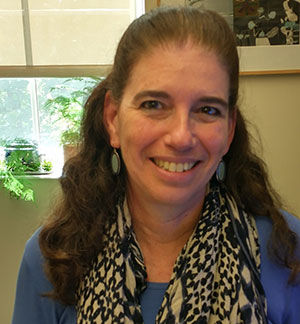Highlander Highlights: Week of September 4, 2023
Every two weeks, Highlander Highlights shares with readers some of the extraordinary research and accomplishments happening on and off campus through the tireless work and curiosity of our students and faculty.
In the eye of the storm
Be calm and relax.
That’s what Dustin Staples ’23 told himself days after beginning a new job. Remaining chill, however, isn’t always easy when the safety of thousands of people depends on your words and calculations.
Staples started work as a weather forecaster at WITN in Greenville, North Carolina, in mid-August. Days later, the longtime weather enthusiast found himself in the midst of a team of meteorologists at the station studying the path of on-coming Tropical Storm Idalia.
Starting in the early morning, Staples spent much of his time making TV graphics and updating forecasts for the station’s chief meteorologist with the latest data from the National Hurricane Center.

Dustin Staples '23
“When I was making the forecast, I saw the trends that Idalia was forecasting to make an impact to eastern North Carolina,” said Staples, a media studies major at Radford. “I was thinking to myself that I get to forecast a possible hurricane coming toward the East, and I was preparing for what was to come.”
That’s a lot of pressure, knowing thousands of people rely on your accurate forecast.
“You have to stay calm and relaxed, even though you see this storm that is producing winds over 100 mph and made an impact to a nearby state or just a few hundred miles away,” said Staples, who worked remotely as a weather forecaster for BTW21 in Martinsville, Virginia, for five years while he was a Radford student. “As the forecast is always changing, the mindset is to just remain confident, especially as many are watching. You want to make sure they are safe.”
As Idalia moved closer to eastern North Carolina, Staples continued to work with his team. It was a tense 10-hour workday for the new guy on the weather crew.
“I was very tired, but also, I was excited to work on a weather phenomenon that the East Coast is used to experiencing every summer,” Staples said. “I also felt a sigh of relief that the original track of the storm was not a direct impact as I was forecasting the week leading up to the storm.”
Summer teaching in Lake Tahoe
In many ways, this past summer was a lot like other summers for Stockton Maxwell, Ph.D. The professor of geospatial science and dendrochronologist spent nine weeks roaming forests to collect and analyze tree core samples and teaching students to do the same.
The difference this year, however, was Maxwell instructed students as the new director of the North American Dendroecological Fieldweek, a professional workshop that teaches the fundamentals of tree-ring research.
“This unique workshop has been running for more than 30 years,’ Maxwell said. “During the workshop, we engage in hands-on projects to teach how dendrochronology can be applied to a range of ecological and climatological questions.”

Stockton Maxwell, Ph.D.
The University of Nevada-Reno hosted the workshop at its Lake Tahoe campus at Incline Village, Nevada. “Lake Tahoe is one of the more beautiful places in the United States, in my biased opinion,” Maxwell noted.
Twenty-four participants from around the world attended the workshop. Among the participants were undergraduate and graduate students, professional foresters and professors interested in building a new skill. Each selected one area of study from five groups: introductory, fire history, ecology, climatology and isotope chemistry, which, Maxwell explained, “investigates carbon and oxygen in wood to understand environmental changes.”
Each group was instructed by an expert, such as Maxwell, in each subfield to provide a genuine research experience. Throughout the workshop, participants constructed projects from the ground up.
“This involves collecting tree cores and cross sections in the forest, sanding and preparing samples in the wood shop and analyzing samples with specifically designed software packages,” the Radford professor said. “The experience culminates in a 20-minute presentation and a five-page write-up of the experience. I like to say that we make people #dendrodangerous by the end of the week.”
Maxwell encourages Radford students interested in attending the workshop next year or conducting tree-ring research to contact him at rmaxwell2@radford.edu. “No experience needed!” he noted.
Student-made interpretive signs sprouting soon in campus greenhouse
Early in the fall 2023 semester, students in the natural and cultural interpretation (RCPT 325) course are designing interpretive signs for potential display at the Radford University Greenhouse.
The process begins with students submitting their individual interpretive sign plans to greenhouse director Stephanie Huckestein, who will then pick the submissions that are best for the facility, explained Anja Whittington, professor of recreation, parks and tourism, who teaches the natural and cultural interpretation course.
The selected signs will provide information about the diverse collection of plants in the greenhouse, located on the east side of Reed Hall. The greenhouse includes a vast collection of plants with medicinal properties, herbs, spices and fruiting plants, as well as various species with interesting biological aspects such as rapid leaf movement, insectivory and hydrophytic and xerophytic adaptations.
The course project will be beneficial to the greenhouse and the participating students, Whittington said.
“It helps student learning with a hands-on applied project that has potential long-term benefits for the greenhouse,” Whittington said.
The Eras Tour is a “Love Story” for an adaptable economy

You don’t need to be a Swiftie to understand and appreciate the economic impact Taylor Swift’s summer Eras Tour has made on each city it’s touched this summer.
“It seems pretty clear the Eras Tour will smash the previous record for revenue produced. Some estimates indicate that ticket sales alone will total over $2 billion, which is more than double Elton John’s 2018-23 tour total of slightly under $900 million,” said economics instructor Jennifer Elias. “If you look at add-on sales such as travel, hotel, food and other concert-related purchases, the gross sales could reach $5 billion.”
However, if you look beyond local, you’ll see the Eras Tour is unlikely to make much of an impact on the U.S. economy, Elias said.
Perhaps a more interesting story in all of this is the changes and innovations in the music industry, where tour ticket sales are now more profitable than music sales.
“Artists like Swift and Beyoncé, who also had a profitable summer, look to live performances rather than record sales to bring in revenue, which is the reverse of how the industry used to operate,” said Elias, who explains the phenomenon further:
“Concerts were a way to attract new fans, who would then spend their money buying albums –so concert tickets were relatively affordable. I used to be able to go to a concert for around the cost of 3 CDs. In the new model, where consumers can get the music for free or close to it on apps like Spotify, songs are released at low or no cost with the goal of attracting fans to high-priced live performances. The average face value of tickets for the Eras Tour was around $250, but average resale values were significantly higher, easily exceeding $1,000. My takeaway from this story is that our economy is really adaptable and innovative. Innovations like Spotify that impact economic markets make businesses and customers in those markets adjust and find new ways to succeed and achieve their “Wildest Dreams.”